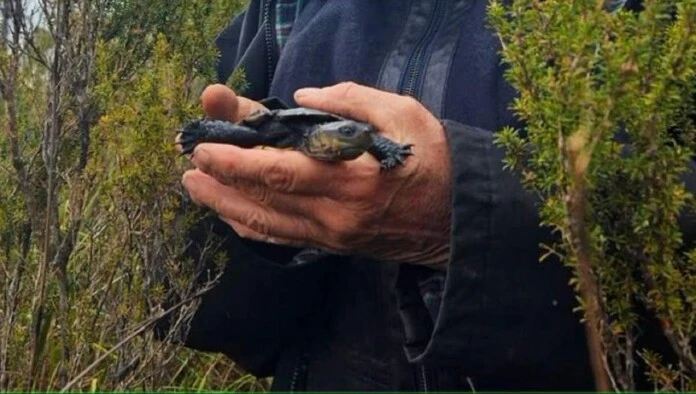The recent discovery that Australia’s most endangered reptile, the Western swamp tortoise, can survive in colder temperatures has reignited conservation efforts in Perth. With only 400 to 500 individuals left in the wild, this finding has provided a glimmer of hope for preserving the species.
Efforts are now focused on introducing the Western swamp tortoise to new areas as its natural habitat continues to dry up. Scientists are working diligently to find suitable environments to support these vulnerable reptiles. The relocation project, which began in 2016, recently found a juvenile tortoise 280 miles south of Perth in Northcliffe, where water temperatures are significantly colder than the tortoises’ typical range.
GNN has previously highlighted some remarkable Australian turtles, such as the “bum-breathing punk” and a species confined to a single river in New South Wales. However, while these species benefit from stable environments, the Western swamp tortoise’s habitat is rapidly deteriorating. The continuous flow of water in Northcliffe allows the tortoises to forage despite the colder temperatures, which fall below the standard minimum for cold-blooded reptiles, around 14°C or 57°F. To gauge the impact of this environment, additional tortoises were relocated to a site further north for comparison.
“This project is significant as it represents one of the first instances of assisted colonization due to climate concerns,” said Nicki Mitchell, a senior lecturer in animal biology at the University of Western Australia. The goal is to adapt the species to new habitats to ensure their survival.
Southern Forests Wildlife official Pauline Hewitt was thrilled to discover that tortoises in the Northcliffe release area survived the colder conditions. One tortoise, which had a cracked shell, was taken to Perth Zoo for rehabilitation before being released back into its native environment. “It was incredibly exciting to see her return to her habitat and watch her flutter her legs as she entered the water,” Hewitt told ABC News.
Mitchell reflected on the success of the trial, noting that the tortoises showed promising growth rates even in the cooler climate of Northcliffe. “We didn’t initially know if the colder temperatures would be manageable, but the results suggest that they can adapt and thrive,” Mitchell explained. A new experimental population has now been introduced to Augusta, approximately 60 miles east of Perth, where conditions are more favorable.
The primary motivation for these relocation efforts stems from predictions that the Western swamp tortoise’s current habitat will become increasingly arid due to a 50 to 100-year weather pattern model for Western Australia. To mitigate this threat, conservationists are working to transplant the tortoises into wetter ecosystems, with Northcliffe and Augusta identified as potential new homes.
